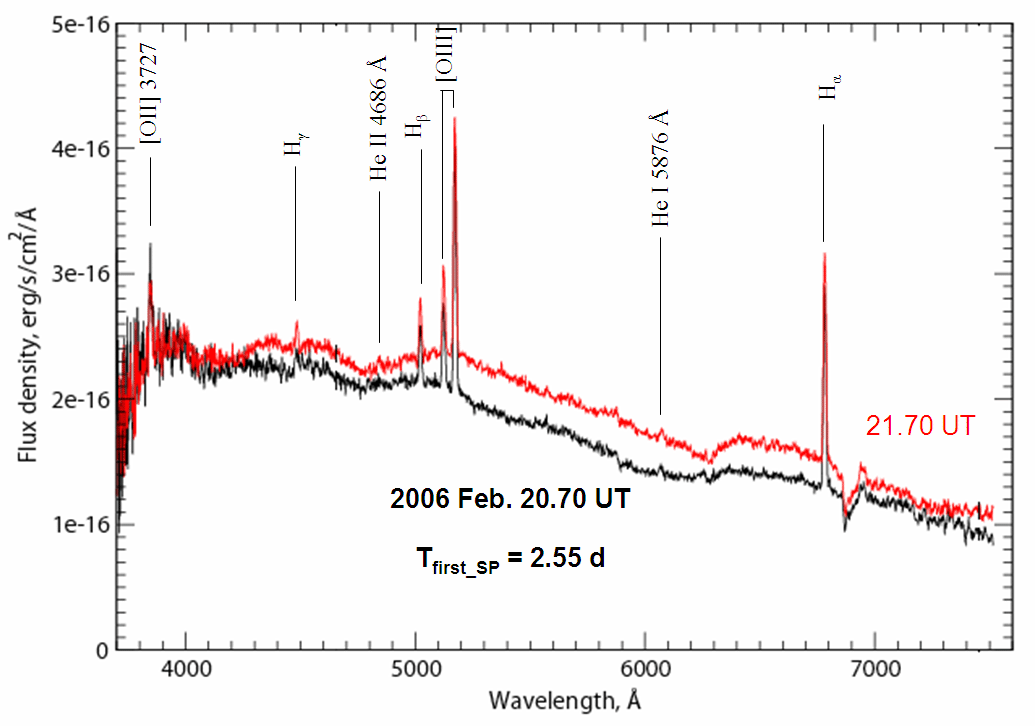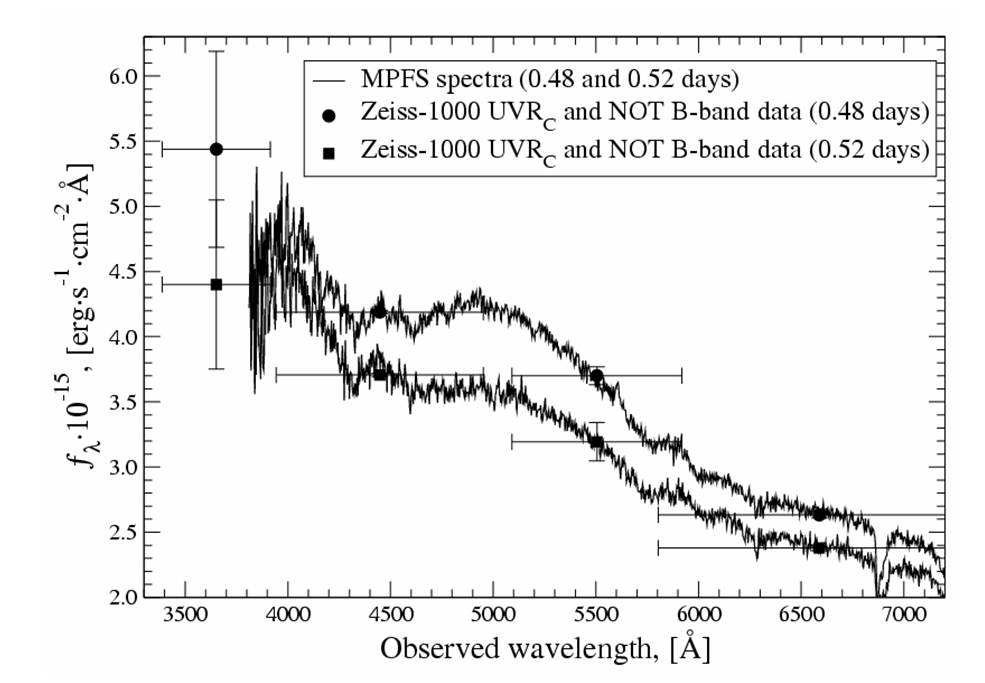
|
|

|
| Eng Rus |
|
|
Main Team Observational programs Results Publications Presentations at conferences Holding conferences: GRB mini-workshop 2006 GRB workshop 2009 |
Report at the SAO's astrophysical seminar on April, 13, 2006 T.A.Fatkhullin and V.V.SokolovGamma-ray bursts and supernovae: new facts, new modelsA review of new observational data confirming a direct relation between cosmic gamma-ray bursts and massive supernovae. About the gamma-ray burst GRB 060218/SN 2006aj (z=0.033): the most recent observational results and about inevitable changes in "standard"/popular scenarios describing the phenomenon of the gamma-ray burst and explosion of a (massive) supernova. The observational results were obtained under a joint porgram of Instituto de Astrofisica de Andalucia (Alberto J. Castro-Tirado, IAA-CSIC, Spain) and SAO RAS The very first spectra of OT GRB 060218(z = 0.0331)
T(first_Sp) - time after the GRB 060218 0603495* - Sollerman et al., directly in Abstract: "Our first spectra are earlier than spectra for any other GRB-SN." But Jesper Sollerman is mistaken a lot because The BTA spectra of GRB 060218/SN 2006aj, as well as the BTA spectra of GRB 030329/SN 2003dh (z = 0.1685), turn out again to be among the very first spectra of two nearest GRB/SN-bursts. UV-excesses in early spectra mean an interaction between the shock wave and the stellar wind of a massive star (the SN Ic shock break-out) The BTA first spectra of OT GRB 060218
BTA & Zeiss GRB 030329
A model of an asymmetric explosion of the GRB/SN progenitor…a strongly non-spherical explosion may be a generic feature of core-collapse supernovae of all types. …Though while it is not clear that the same mechanism that generates the GRB is also responsible for exploding the star. astro-ph/0603297, Leonard, Filippenko et al. 
Fig. from Astro-ph/0604131, Woosley and Heger Though the phenomenon itself is unusual, but the object-source is not unique! The closer a GRB-source is, the more are the signs of a supernova. |
||||||||||||||||||||||||
| Design © ts@sao.ru | |||||||||||||||||||||||||
| Last update: 15.02.2014 | |||||||||||||||||||||||||